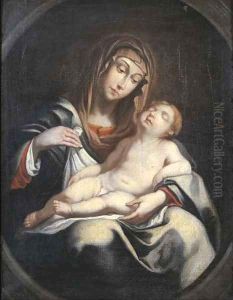Erasmus Quellinus Paintings
Erasmus Quellinus II, also known as Erasmus Quellinus the Younger, was a Flemish Baroque painter and draughtsman. He was born on November 19, 1607, in Antwerp, which was then part of the Spanish Netherlands. Erasmus came from an artistic family; his father, Erasmus Quellinus the Elder, was a sculptor, and his brother, Artus Quellinus, became a renowned sculptor as well. Erasmus was named after his father and was the second of that name, hence the designation 'the Younger'. He is sometimes confused with his brother-in-law, the painter Jan Erasmus Quellinus, who married his sister, Cornelia.
Erasmus Quellinus II became a master in the Guild of Saint Luke in Antwerp in 1634 and worked closely with Peter Paul Rubens. He was deeply influenced by Rubens's style and subject matter, but he also developed his own distinct approach. Quellinus's works include historical and mythological scenes, portraits, and altarpieces. He was particularly adept at large-scale decorative projects and worked on the decorations for the Joyous Entry into Antwerp of the Cardinal-Infante Ferdinand in 1635.
His successful career included collaborations with other artists, such as collaborating with Jan Fyt on the painting 'Diana Returning from Hunt.' Quellinus took over Rubens's studio in Antwerp after Rubens's death in 1640 and continued to receive commissions from churches, monasteries, and private patrons. He also became a teacher, with several prominent Flemish painters, such as Jan-Erasmus Quellinus, passing through his workshop.
Quellinus married Catharina de Hemelaer in 1634, with whom he had 11 children. His son, Jan Erasmus Quellinus, would go on to become a noted painter as well. In addition to his painting career, Erasmus was also an intellectual engaged in the contemporary scholarly debates of his time. He corresponded with intellectuals and had an interest in the works of the ancient Roman architect Vitruvius.
Erasmus Quellinus II died on November 11, 1678, in Antwerp. His work is recognized for its elegant execution and the integration of classical elements, which contributed to the development of the Flemish Baroque style. Today, his works can be found in various museums and collections around the world, his legacy part of the rich tapestry of Flemish art history.
